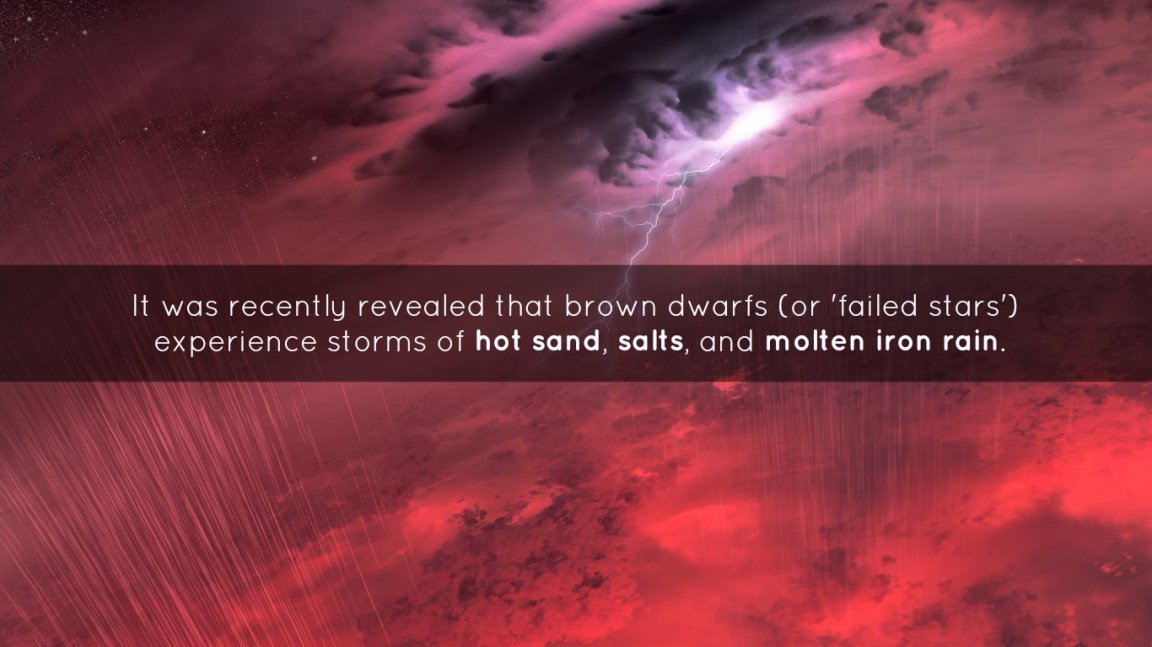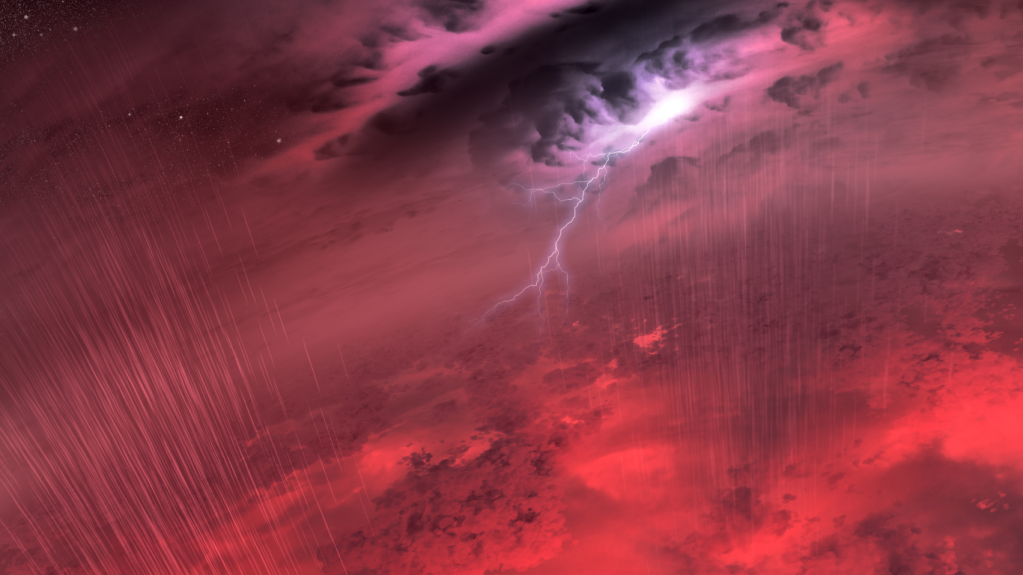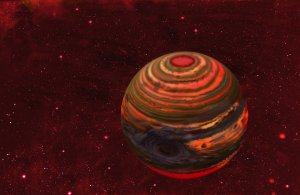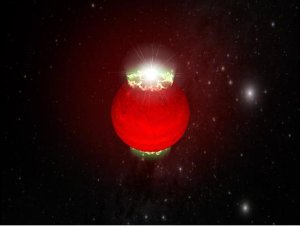

This post is not about short people of a particular color, who are ill. This is about Brown Dwarfs. You likely know of them as the stars that are forever stuck in puberty – too massive to be defined as a planet, but not massive enough to ignite the nuclear fusion that defines main-sequence stars (like our sun).
A new study of 44 such brown dwarfs has revealed that, like planets, the brown dwarfs also have weather systems. For obvious reasons, the weather there is a bit “unearthly.” On Earth, the majority of storms and lightning are somehow related to water. But the brown dwarfs are far too hot to have any kind of water-based weather. Yet, they still do have clouds, storms, and lightning (you get the picture).
HELLISH ENVIRONMENT:
So what are these storms made of then? The clouds and the rain are believed to be made of hot sand, salts, and even molten iron! To give you some idea of the significance of this, iron melts at 2,800°F (1,538°C). So, imagine a red hot, burning furnace. Then, add lightning to the equation. It would likely look similar to this:

So how did astronomers see such violent weather on these “failed stars”? Well, clouds moving across the surface of a planet (or star, in this case) result in variation of the brightness we see emanating from the object. In the case of planets, it is the light that they reflect (coming from their star) that we detect, while in the case of these brown dwarfs, it’s the tiny bit of light they generate themselves that is observable. Even though the light from the dwarfs is not very bright compared to the amount produced by normal stars, our instruments can still pick up the variations in it, as clouds block some of it for some time, and then move to some other part of the surface, leading to changes in brightness over time.
VARIABILITY OF BROWN DWARFS:

Although out of the 44 brown dwarfs under study, only about half showed direct evidence of these brightness variations, scientists still think most, or even all, of the dwarfs must be “weathered”. This is because it’s likely that not all of them were aligned perfectly with our line of sight from Earth – some of them would be aligned in such a manner that the storms would either be hidden or be always in view; for detection of weather patterns, the key is change in brightness. For example, if a storm were to always cover the surface of the dwarf, the light from the dwarf would be reduced. But since we never get to see that same dwarf being any brighter, we can’t say whether this is because it’s covered by a storm, or because it’s just less bright by itself (by not being massive enough, and hence, by not producing enough energy through internal contractions).
So, the take away is, we can say that there are active weather systems on almost all brown dwarfs.
And it turns out that Santa was extra pleased with the astronomers’ efforts! In addition to the above, they also discovered that some of these dwarfs rotated more slowly than any previously observed! They have a couple of theories as to why that might be – different formation histories, undetected planets tugging on the dwarfs (gravitationally) and slowing them down over time, etc. As always, they need more observations and data to say anything conclusively. Talk about icing on the cake!
THE UNIVERSE THROUGH NIGHT GOGGLES:

The observations for this study were made with the Spitzer Space Telescope. The infrared observatory was ideally suited for the task due, in part, to its thermal-imaging capabilities (something similar night-vision goggles, used in the Arnold Schwarzenegger movie, Predator), and partly because of its orbit – it orbits the Sun, instead of the Earth. This allows it to make observations of such faint stars that would otherwise be drowned out by the glare of Earth.
All this information not only helps the astronomers understand brown dwarfs better, but also their little cousins; the gas giants. Perhaps these observations may one day be able to explain what’s really going on with Jupiter’s Great Red Spot, which has been in existence for over 400 years!